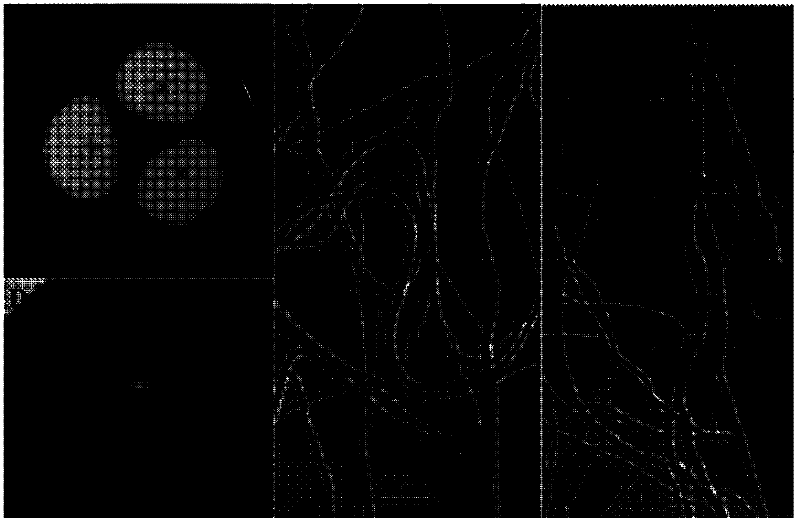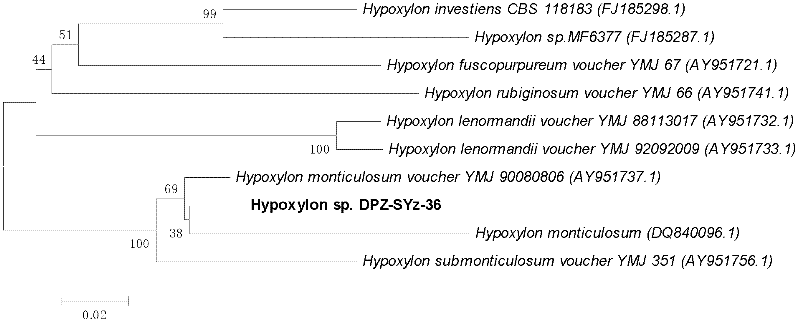New species of Rhizophora stylosa root cellulose degrading fungus Hypoxylon sp. DPZ-SYz-36 and application thereof
A dpz-syz-36, degrading bacteria technology, applied in the biological field, can solve the problem of less cellulase
- Summary
- Abstract
- Description
- Claims
- Application Information
AI Technical Summary
Problems solved by technology
Method used
Image
Examples
Embodiment 1
[0022] 1. Materials
[0023] 1.1 Soil sample collection
[0024]The samples were collected from the rhizosphere sediments of Rhizophora stylosa in the mangrove area along the Hongsha River in Sanya City, Hainan Province in September 2010. After the samples were collected, they were put into sterilized sealed polyethylene bags and brought back to the laboratory at a low temperature of 4°C. save.
[0025] 1.2 Medium
[0026] 1.2.1 Initial screening medium:
[0027] The preparation method of each liter of primary screening medium is as follows: Potato juice (peel the potatoes, dig out the bud eyes, wash, and slice. Weigh 200g and put it into 1000ml tap water, boil with a slow fire for 30min, filter with double gauze, add water to the filtrate to 1000ml) 800ml, sucrose, 20.0g; NaCl, 1.5g; agar, 15g, soil extract, 200ml; after sterilizing at 121°C, cool the medium to 60°C and add filter-sterilized 100μg / ml ampicillin and 100μg / ml 1ml each of streptomycin sulfate.
[0028] 1.2....
PUM
| Property | Measurement | Unit |
|---|---|---|
| diameter | aaaaa | aaaaa |
Abstract
Description
Claims
Application Information
 Login to View More
Login to View More - R&D
- Intellectual Property
- Life Sciences
- Materials
- Tech Scout
- Unparalleled Data Quality
- Higher Quality Content
- 60% Fewer Hallucinations
Browse by: Latest US Patents, China's latest patents, Technical Efficacy Thesaurus, Application Domain, Technology Topic, Popular Technical Reports.
© 2025 PatSnap. All rights reserved.Legal|Privacy policy|Modern Slavery Act Transparency Statement|Sitemap|About US| Contact US: help@patsnap.com



